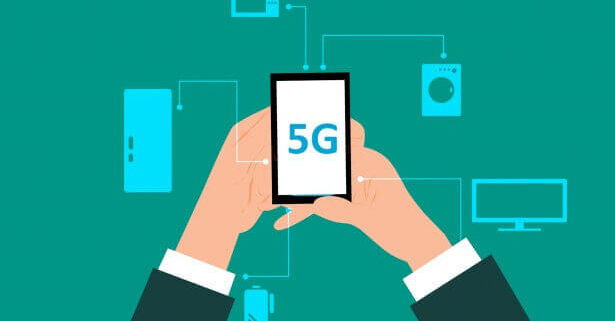5G Technology – The Final Piece of the Puzzle in the Connected Infrastructure Revolution
Smartphones have become an indispensable part of human life, with the latest advances in technology focusing to bring about all the possible applications at the palm of the individuals. However, the smartphones have, in fact, began to look like a relatively old innovation and is now merely used as a foundation for the new technological breakthrough, with new innovations aiming to make just about any device –smart and thus, connected to the smartphone. For example, the surge of internet of things has led to development of number of connected devices such as smart TV’s, smart wearable device, smart kitchen appliances, and smart energy saving solutions among others, which has the capability of keeping the individuals always informed while simultaneously providing the owner with the power to control its assets from just about any location and anytime. The advent of smart devices is creating the huge volume of data that is being transmitted and thus is creating a challenge to maintain the process of data transmission smooth. In fact, the total internet traffic in 2016 increased to 26,600 GB per second from 2,000 GB per second in 2007 (Source: Cisco VNI, 2017). This was primarily because of the adoption of 4G technology, which ramped up the data transmission speed and reduced the connection latency compared to the previously available technologies. However, the arrival of the 5G technology is drawing closer with each passing day, with major companies currently testing the viability of the technology and the commercialization of the technology is slated to be in the first half of 2019. The 5G technology comes with the capability of transmitting data at a speed of 10 Tbps and a density of 1 million nodes per Km², while it is expected to further reduce the connection latency and thus will improve the data transfer rate and allow millions of devices to be connected simultaneously. In fact, the adoption of 5G technology is anticipated to boost the proliferation of connected devices globally as the number of connected devices is projected to increase from 19.24 billion units in 2016 to 85.93 billion units in 2023 with marked growth expected to be observed after 2019.
FIGURE 1: NUMBER OF CONNECTED DEVICES, IN BILLION UNITS


Simultaneously, the urban planners is also moving towards the development of smart infrastructure as they seek to address the concerns regarding the individual safety, improving air quality, enhancing efficiency in the transportation system, and in general improve the standard of living. Moreover, with the proportion of urban population expected to increase from 54% in 2014 to 66% by 2050, efforts are being made to make the cities more efficient and overcome these challenges. In this regard, the communication system is considered to be of the utmost importance that has the capability of unleashing critical services. Therefore, it is an accepted fact that the development of the smart infrastructure and thus smart cities is heavily dependent on the data transmission speed that allows handling of the large volume of data smoothly, and the commercialization of 5G technology is expected to increase the number of smart cities projects worldwide radically.
There is also widespread research being conducted in the sphere of autonomous vehicles that requires continuous internet connectivity in order to operate, however, the commercial reality of completely autonomous vehicle is believed to be still years away. Simultaneously, the idea of connected cars has been growing, with the number of connected cars rapidly increasing. Presently, the majority of the connected cars in the market are equipped with level 2 autonomy, which tends to generate approximately 25 GB of data per hour. The present level of connected features in the vehicles can be managed through the existing data transmission speed, however, the automotive manufacturers are aiming to increase the convenience level for the individuals, and install vehicles with more advanced features. The success of level 3 autonomous vehicles, and such the subsequent levels in the autonomous vehicle, is dependent on the speed with which the data is gathered from different sensors installed in the cars and time taken to respond to the given circumstances. In this aspect, the internet connectivity plays a vital role in terms of the duration of processing speed and 5G technology is projected to significantly improve the scope of the connected and autonomous vehicle in the years to come because of its ability to support vehicle to vehicle and vehicle to infrastructure communication.
To conclude, the idea of being always connected with the required devices is on the cusp of being realized as more devices aiming to improve the quality of life and convenience to the individuals are being developed. The imminent commercialization of 5G technology is expected to unlock the potential of high speed data transmission that is crucial for the functioning of the connected devices and, therefore, the arrival of 5G technology is, in fact, the final piece of the puzzle that is required to support the revolution of connected infrastructure.



